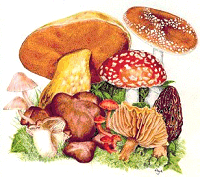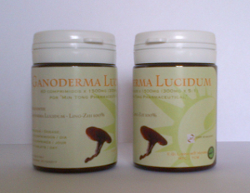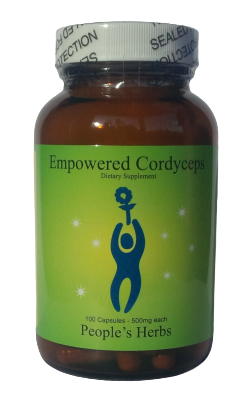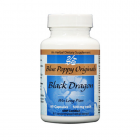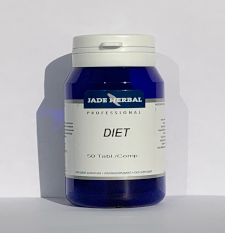Shop News
-
25/11/2025Ganoderma Benefits
-
07/02/2025Colds & Flu - treatment and prevention
-
24/01/2025Ginseng - Nature's anti-inflammatory
-
23/01/2025Curcumin Benefits
-
02/05/2024Allergies Tradicional Chinese Medicine
-
12/03/2024Food Combining and Chinese Medicine
-
23/08/2023Phytoestrogens
-
05/06/2023Ginseng Benefits
-
02/06/2023Aumento de precios de la marca Blue Poppy
-
20/07/2022Infertility and Chinese Medicine
-
10/05/2022Allergic Rhinitis
-
24/03/2022TCM Obesity and Its Causes
-
23/03/2022Cancer Prevention and Diet
-
26/01/2022Medicinal Mushrooms
-
18/12/2021Christmas Remedies
-
09/07/2021CANDIDIASIS
-
03/03/2021Chinese Herbal Medicine formula studied to improve cancer therapy
-
12/01/2021The benefits of Xiao Yao San
-
15/09/2020Coronavirus Protocol (summary)
-
01/06/2020TCM Principles for Weight Loss
-
12/02/2020Take Good Care of Your Qi
-
01/01/2020Cordyceps Sinensis Benefits
-
01/12/2019Prevention & Treatment of Colds & Flu
-
27/04/2019ANXIETY - causes and treatments
-
26/03/2019Prostatitis and Chinese Herbs
-
01/03/2019What is an Adaptogenic Herb?
-
05/02/2019New Jade Herbal Formulas
-
09/12/2018The Shen of the Heart
-
23/08/2018Hyperthyroidism and Hypothyroidism
-
05/07/2018FOCUS ON A REMEDY: WARM THE MENSES
-
04/04/2018Treating Insomnia With Chinese Herbal Medicine
-
25/03/2018Cordyceps Sinensis research
-
01/03/2018Chinese Herbal Medicine for Panic Attacks
-
17/01/2018Clinical application of the Clear Metal remedy for advanced stage of influenza
-
02/01/2018New Pediatric Formulas by "Blue Poppy"
-
07/11/2017BI SYNDROME
-
01/09/2017Chemotherapy and Anti-Oxidants
-
05/03/2017Lumbar Disc Herniation
-
31/01/2017Treatment Principles in Exterior Invasions
-
21/10/2016Healthy Aging and Oriental Medicine: Qi is the secret
-
23/09/2016Horny Goat's Weed Benefits
-
23/07/2016FOCUS ON A REMEDY: PROSPEROUS EARTH
-
25/06/2016Ginkgo Biloba Benefits
-
23/03/2016Blood Stasis
-
23/02/2016FOCUS ON A REMEDY: PROSPEROUS EARTH
-
23/01/2016CHRONIC FATIGUE SYNDROME
-
28/12/2015TONICS
-
24/10/2015A CASE HISTORY OF CHRONIC BRONCHITIS
-
23/09/2015Ganoderma Lucidum reduces obesity in mice
-
01/07/2015The Five Elements and Diet in Chinese Medicine
-
23/05/2015Daoist Sexual Practices
-
21/02/2015DEPRESSION
-
22/01/2015GLAUCOMA
-
20/12/2014ENDOMETRIOSIS
-
28/11/2014POLYCYSTIC OVARY SYNDROME
-
21/08/2014Ear infections and antibiotics
-
24/06/2014FOCUS ON A REMEDY: CHEMO-SUPPORT
-
21/03/2014Stomach-Yin Deficiency and Jade Spring
-
21/02/2014JOY, AN EMOTIONAL CAUSE OF DISEASE?
-
17/01/2014SEXUAL LIFE IN CHINESE MEDICINE
-
19/12/2013ON STAGNATION OF LUNG- AND HEART-QI
-
14/11/2013THREE TREASURES REMEDIES FOR PAIN
-
23/10/2013HEADACHE CASE HISTORY
-
22/10/2013.
-
12/07/2013Giovanni Maciocia Clinical Tip: Arouse Power
-
28/05/2013Blue Poppy - New Formulas
-
19/04/2013Case history - Chronic constipation
-
14/03/2013Three Treasures Webinar
-
31/01/2013Recurrent Bronchitis: a case history
-
31/12/2012FOCUS ON A REMEDY: SOOTHE THE SHEN
-
18/06/2012Herbs for the treatment of Anorexia
-
09/05/2012Three Treasures & Women's Treasures now available
-
09/04/2012REMEDY OF THE MONTH: CLEAR YANG
-
02/07/2011New Pediatric Formulas
-
28/04/2011Lingzhi slows progress of Alzheimer’s
-
18/10/2010European Legislation for natural products
-
19/09/2010700-year-old Chinese medicine can treat depression...
-
24/04/2010PDF Catalog
-
01/09/2009Swine Flue
Cancer Prevention and Diet
INTRODUCTION
Anyone can get cancer at any age; however; about 77% of all cancers are diagnosed in people aged 55 and older. Since this article focuses only on cancer prevention through diet we need to emphasize the importance of including lifestyle risk reductions in your cancer prevention program as well. We hope the information contained in this article helps you in your quest for maintaining a healthy cancer-free life.
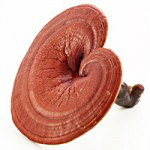 HERBAL AND NUTRITIONAL SUPPORT
HERBAL AND NUTRITIONAL SUPPORT
• Reishi (Ganoderma), shiitake and maitake mushrooms - contain polysaccharides- plant chemicals that have been found to be effective in preventing tumor growth and in strengthening the immune system. Maitake mushrooms stimulate immune function and also inhibit tumor growth. Shiitake contains the polysaccharide lentinan which is known to boost the activity of the immune system. Shiitake fosters many immune-enhancing activities including stimulation of macrophages, increased cytotoxic activity of macrophages, increased production of interleukin-1 and -2, increased T-lymphocyte production, and enhanced CD-4 cell function.
• Astragalus: A 1990 study found that taking astragalus daily increased the body’s ability to kill cancer cells by tenfold. Shi Quan Da Bu Wan, a Chinese formula containing astragalus and ligusticum, has been proved most effective in enhancing cellular immunity, specifically interleukin production by the body.
• Ginseng (Panax) - can not only stop the growth of malignant liver cells in the test tube, but can turn them back to normal. In animal studies panax ginseng has been shown to inhibit metastases to the lung and liver and to reduce elevated platelet and fibrinogen levels caused by the tumor cell lines.
• Atractylodes- contains 3 cancer-inhibiting components which have demonstrated the strongest activity against esophageal cancer.
• Chinese skullcap (Scutellaria baicalensis) - inhibits many viruses including tumor viruses and the HIV virus by inhibiting reverse transcriptase. It is also anti-inflammatory and induces cell death in a number of cancer cell lines including two sarcomas and cervical cancer. (Yance, 1999)
• Codonopsis stimulates the growth of red blood cells, enhances T-cell trans formation and stimulates phagocytosis.
• Coenzyme Q10 (CoQlO) - is recommended for anyone with cancer who is on the chemotherapeutic drug Adriamycin. Adriamycin depletes CoQlO levels in the heart muscle, which can lead to heart damage (this is a serious side effect of this drug). When CoQlO is administered in conjunction with this drug, heart damage does not occur.(Yance, 1999)
• Licorice (Glycyrrhiza glabra) - contains glycyrrhizin which posses blocking ability against tumor-promoting agents. A recent study in Japan demonstrated that glycyrrhizin can inhibit liver cancer caused by hepatitis. (Yance, 1999; Kumada, 2002)
• Chai Hu Shu Gan San (Minor Bupleurum Formula) . This formula has been found extremely effective at inhibiting cancer by enhancing the immune system, inducing apoptosis and inhibiting angiogenesis. It is most useful in breast and liver cancers, but can also be used to treat colon cancer. Bupleurum saponins exhibit anti-inflammatory activity similar to prednisone. (Yance, 1999)
• Medicinal plants that have exhibited antitumor action due to modulation of programmed cell death and arrested proliferation are trichosanthes, soy, garlic, ginger and green tea.(Thatte, 2000)
USEFUL VEGETABLES 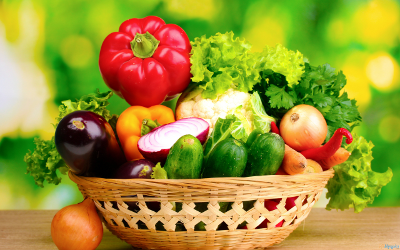
• Asparagus- has a cleansing effect on the lymphatic system and kidneys. It contains protein compounds called histones which are believed to act as cell-growth normalizers on cancer-cell division.
• Avocados- are perhaps the best overall source of essential fatty adds and glutathione and are a great source of protein. Avocados are easily digested, making them an ideal food for people recovering from surgery or for the very sick
• Broccoli, cauliflower, Brussels sprouts, apples, grapefruit, apricots and cherries - contain D-glucarate. a natural compound produced in small amounts by humans and some plants. It encourages the detoxification of environmental carcinogens and estrogenic tumor promoters.
• Broccoli, Brussels sprouts, kale, cauliflower, carrots and green onions contain a potent anticancer compound called sulphoraphane which according to scientists at John Hopkins medical school greatly increases anti-cancer enzyme systems in cells. They also contain isothiocyanates which enhance glutathion S-transferase, which helps in carcinogen excretion. Broccoli sprouts contain up to 100 times more sulforaphane than does broccoli itself. Another compound found in broccoli and other cruciferous vegetables called indole-3-carbinol has been shown to increase the excretion of a form of estrogen called 2 hydroxyestrone, which is linked to breast cancer.
• Broccoli and onions - contain quercetin. a flavone which has a cancer inhibiting effect by preventing a defect in the tumor suppressor gene p53. Quercetin also inhibits the tumor producing PGE-2 series by blocking proflammatory reactions in the body.
• Broccoli contains dithiolethiones which trigger the formation of glutathione S transferase, which may prevent carcinogens from damaging a cell’s DNA.
• Carrots, sweet potatoes, collard greens, cantaloupe, squash, apricots, fresh pumpkin, kale, spinach, mangos, papayas and yams - contain beta-carotene which is considered one of the most promising anti-cancer agents. In one study the more beta-carotene men got in their diet the less lung cancer they developed. It may also prevent a second tumor in patients who have been cured of an initial cancer but now stand at an increased risk of developing new cancers in the upper part of the digestive tract. Carotenoids are best assimilated if taken with a fat such as flaxseed oil or olive oil.
• Garlic, onions, leeks, and shallots (album vegetables). According to the National Cancer Institute garlic is one of the best foods for protection against cancer. It contains the anti-cancer mineral selenium . which stimulates white blood cell production and induces apoptosis (cancer cell death). Alliums contain compounds that stimulate the production of enzymes that neutralize the free radicals linked with cancer. Alliums contain saponins.which prevent cancer cells from multiplying and they also contain allyl sulfides which increase the production of glutathione S-transferase and other enzymes that enhance carcinogen excretion.
• Garlic, onions, Brazil nuts. whole grains and greens - contain selenium. which causes cancer cells to die before they spread, repairs damaged DNA, protects against free radicals and aids the body’s natural detoxification process.
• Green vegetables, chlorella and spirulina - contain chlorophyll which is an antigenotoxin that inhibits the mutagenic activity of certain chemicals. According to one study published in the journal Mutation Research in 1989, chlorophyll proved to be a more effective antimutagen than all known anticancer vitamins, including vitmains A, C and E.
• Potatoes - are a rich source of alpha lipoic acid – a powerful antioxidant which strengthens and regenerates other antioxidants in the body, especially vitamin E. Biochemist Richard Passwater, Ph.D. suggests that lipoic add may even inhibit the activation of the gene that triggers cancer growth in cells. Potatoes also contain a diverse amount of polyphenolic compounds and protease inhibitors and are a great source of vitamin C.
• Red peppers, fresh orange juice, broccoli, apple juice, green peppers, grapefruit juice, cranberry juice, papaya and fresh strawberries contain vitamin C which fights free radicals. Vitamin C appears to offer some protection against all cancers.
• Tomatoes, watermelons, red peppers, and carrots contain lycopene which may explain a recent Italian study that found that people who ate raw tomatoes at least 7 times a week halved their risk of several cancers compared to those who ate tomatoes no more than once a week.
• Tomatoes, green peppers, strawberries and carrots - contain p-coumaric and chlorogenic acids which hook onto nitric oxides in the foods we eat and spirit them out of the body before they can form cancer causing nitrosamines.
• Watercress, Chinese cabbage and turnips - contain phenethyl isothiocyanate which can prevent nicotine-induced lung cancer.
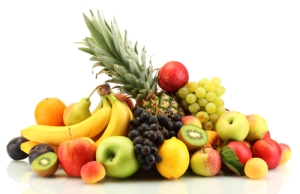 USEFUL FRUIT
USEFUL FRUIT
• Citrus fruit peels - contain a remarkable anti-cancer substance called D-limonene.Small bits of organic orange peel go well in salads or can be added to any tea. Be sure to cover the tea as it seeps so that the aromatic oils don’t escape.
• Cranberry- contains the anti-cancer constituent, proanthocyanidin. which has an anti-oxidant capability ten times greater than that of vitamin E.
• Figs - contain benzaldehyde which has been shown experimentally to decrease drastically the uptake of thymodine and adenine which leads to a decreased level of ATP within cancer cells, while having no effect on normal cells. It appears it can arrest tumor progression and have a paralytic effect on tumor growth.
• Fruit - contains caffeic acid which enhances production of enzymes that make carcinogens more water-soluble. Fruit also contains ferulic add which binds to nitrates in the stomach preventing production of carcinogenic nitrosamines.
• Grapefruit - contains the flavonoid naringenin which slows the growth of human breast cancer cells.
• Grapes, many berries and some nuts contain a phytoalexin component calledresveratrol which has shown cancer chemopreventive activity. Resveratrol has been found to act as an antioxidant, antimutagen and anti-inflammatory. It has also been shown to inhibit the development of breast cancer and induce antiprogression activity in human myelocytic leukemia.
• Pomegranates, grapes, strawberries, raspberries and nuts contain ellagic acid which blocks the body’s production of enzymes used by cancer cells. In one study an extract of Concord grapes was shown to be as effective as the cancer drug methotrexate in slowing tumor growth. Ellagic acid is particularly effective in the inhibition of lung cancer caused by tobacco.
• Red grapes (especially the seeds), blueberries, blackberries, cherries and grapes-contain oligomeric proanthocyanidins. known as OPC’s, which help to protect DNA from free radicals due to radiation and chemicals and slow down the mutation of cancer cells.
• Tangerines - contain tangertin which inhibits cell-endothelial adhesion, a very important step in the metastatic process of cancer.
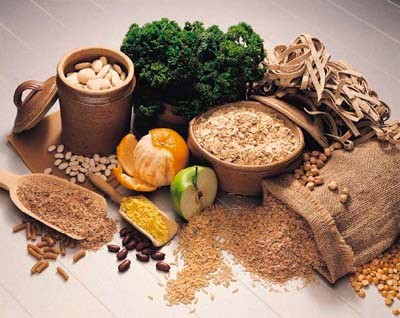 USEFUL GRAINS, LEGUMES AND OTHER FOODS
USEFUL GRAINS, LEGUMES AND OTHER FOODS
• Barley, bran. brewer’s yeast, brown rice, chicken, dates, green leafy vegetables, legumes, lentils, milk, mushrooms, oranges, split peas, root vegetables, salmon, tuna, wheat germ, whole grains and whole wheat contain folic acid which increases the production of white blood cells crucial in the defense against cancer. Folic acid in dark green leafy vegetables, oranges and liver may act together with vitamin B12 to prevent injuries to lung tissue and retard the development of cancer among cigarette smokers.
• Eggs - preferably organic eggs, are one of the best protein foods for people with cancer. Eggs contain all eight essential amino acids and are rich in essential fatty acids, vitamins, minerals, glutathione, sulfur and phospholipids. They are best prepared slow cooked or poached. One or two can be eaten once or thrice a week.
• Fish. A recent study has shown that omega-3-rich fish oils impede angiogenesis and reduce tumor invasiveness. Although a diet high in animal protein is not recommended for some people moderate portions once or twice a week can contribute to a well-rounded diet.
• Fiber from fruits, vegetables, beans and whole grains. Since 1980 25 out of 32 studies have shown that fiber protects against colon cancer.
• Olive oil - does not oxidize easily and is also a good source of squalene. the most potent inhibitor of angiogenesis. Buy only unrefined cold-pressed polyunsaturated vegetable oils but do not use them in cooking.
• Sardines, spinach and peanuts - contain CoQ10 which protects against cancer by strengthening the immune system and zapping free radicals.
• Soybeans, chickpeas and other legumes - contain protease inhibitors which reduce certain enzymes in cancer cells.
• Soy products. Fermented soybean products such as miso, shoyu, tempeh and natto contain cancer prevention properties that exceed that of unfermented soybeans, soy milk and tofu. Fermented soy products are rich in isoflavones, including genistein, which has been shown to block the growth of a number of cancers.
FOODS TO AVOID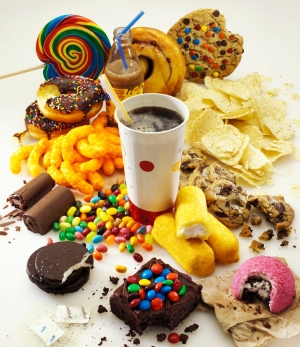
• Avoid beef. pork and lamb; processed meats and liver. In a large study at Harvard it was shown that the relative risk of colon cancer in women who ate beef, pork, or lamb as a main dish every day was about two-and-a-half times that of women who ate such foods less than once a month. Processed meats and liver were also associated with increased risk, whereas fish and chicken without skin were related to decreased risk. The conclusion was that a high intake of animal tat increased the risk of colon cancer.
• Avoid all processed fats and oils or any foods containing processed oils including hydrogenated or partially hydrogenated products. Trans fats or hydrogenated oils found in margarine and vegetable oils are linked with an increase in breast cancer. Avoid canola oil, safflower oil, corn oil, soybean oil, sesame oil as well as margarine. Avoid all commercial cookies, crackers, snack foods, frozen foods, deli foods, mayonnaise, fried foods and all foods labeled “partially hydrogenated.”
• Avoid frying, barbecuing or broiling meat, poultry or fish - especially when using polyunsaturated fats such as safflower or corn oil as it can produce potential carcinogens called heterocyclic amines which have been linked with many forms of cancer. If you do occasionally fry food, use olive oil or butter and do not cook to a point where your food becomes burnt or blackened.
• Avoid refined carbohydrates such as white sugar and white flour. They can cause abnormally high levels of blood glucose, a common factor in cancer. The excess glucose feeds the fermentation process of cancer cells and suppresses the immune system. Elevated glucose levels are seen three to eight times more often in people with active cancer. A study on diet and breast cancer showed a relationship between an excess of starch intake (refined pasta and bread) and breast cancer.
• Cancer patients should avoid coffee. For those in good health, however, organic coffee is fine in moderation.
• Cancer patients should avoid alcohol. Alcohol depletes glutathione levels and stresses the liver. For healthy individuals a glass of organic red wine with a meal is fine. Wine is a rich source of two very important anti-carcinogens – PCOs and resveratrol.
• Do not smoke. Countless studies have shown significant increase in the risk for cancers of the lung, bladder, esophagus, stomach and pancreas in smokers as compared to nonsmokers.
Medicinal Mushrooms
Along with the bold yet delicate taste that shiitake, maitake, cordyceps and reishi mushrooms add to soups and other dishes, these gourmet delicacies are prized as herbal medicines. Traditional Asian healers have used them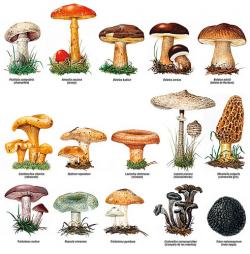 for centuries to strengthen the immune system and promote longevity. Recently, an Extract from a different mushroom altogetherâ, from the Coriolus (Coriolus versicolor) mushroom --was identified as a possible ally in the fight against cancer. While mushrooms other than these may well have specific health-promoting actions, they haven't been as thoroughly researched for medicinal purposes.
for centuries to strengthen the immune system and promote longevity. Recently, an Extract from a different mushroom altogetherâ, from the Coriolus (Coriolus versicolor) mushroom --was identified as a possible ally in the fight against cancer. While mushrooms other than these may well have specific health-promoting actions, they haven't been as thoroughly researched for medicinal purposes.
Shiitake (Lentinus edodes) mushrooms are low in calories and are a good source of potassium, phosphorous, iron, selenium, Protein, Vitamin D2 (ergosterol, a plant sterol that is converted to vitamin D when exposed to ultra-violet rays), thiamin, riboflavin, and niacin, as well as all essential Amino acids, enzymes, fiber, and nucleic acid derivatives. In ancient China, herbalists utilized shiitake for a host of ailments including colds, flu, headaches, measles, gastrointestinal distress, and liver problems, as well as for improving circulation and increasing vitality. Ancient physicians prescribed shiitake to boost chi, or life energy. Now, shiitake are a subject of intense research, and the medicinal capabilities attributed to the shiitake mushroom are so prized that it is now among the most cultivated of the world’s edible mushrooms.
Maitake (Grifola frondosa) mushrooms are also packed with nutrients and have long been used in Traditional Chinese Medicine. They are rich in minerals such as calcium, magnesium and potassium, vitamins B and D2, and niacin, as well as amino acids and fiber. Maitake mushrooms contain a protein-bound polysaccharide compound called beta-glucan, which has been identified as an active constituent responsible for its immunity-enhancing, anti-tumor properties.
Reishi (Ganoderma lucidum) mushrooms also contain beta-glucans and are one of the few known sources of another polysaccharaide group called triterpenes, which are also thought to have potential immunomodulating, anti-tumor, and Antioxidant activities. Reishi varieties also contain vitamins including D2, minerals, and unsaturated fatty acids. Reishi mushrooms have also been touted for immunity-enhancing and regulating activities.
The Coriolus versicolor mushroom contains one of the most-studied mushroom extracts. Since the early 1970s, more than 400 studies have evaluated the extract, PSK (polysaccharide krestin), for its anti-cancer properties. Another polysaccharide found in the Coriolus mushroom, called PSP (polysaccharide peptide), also appears to have cancer-fighting properties. And, like Maitake, PSK extract is high in immune-boosting beta-glucan.
Another medicinal mushroom, the cordyceps species, also contains immune-boosting beta-glucans and triterpenes. The cordyceps grows out of caterpillar larvae in the Himalayas, and has been used in traditional Chinese medicine to treat cough and wheezing and to reduce fatigue and calm nervousness. Although the cordyceps species has been touted for its potential to enhance physical performance, scientific evidence does not support these claims.
All of these healing mushrooms contain polysaccharides, powerful compounds that help in building immunity. Polysaccharides and other compounds in mushrooms may also lower cholesterol, reduce the risk of dangerous blood clots, prevent heart disease, treat diabetes, relieve bronchitis and sinusitis, and possibly fight cancer cells and increase the potency of cancer treatments.
Specifically, mushrooms may help to:
Improve risk factors for heart disease, such as lowering blood pressure and cholesterol. Shiitake and maitake mushrooms contain polysaccharides called lentinan, which may have potential cardio-protective effects, such as cholesterol lowering properties; and other polysaccharides found in reishi and a variety of other mushrooms also may have additional cardio-protective benefits. Several studies in animals have shown the potential of these mushrooms for improving blood pressure and cholesterol levels. For example, in a 1987 study done with rats with high blood pressure, those fed a diet containing shiitake and maitake mushroom powder for nine weeks experienced a decrease in blood pressure and cholesterol levels while no differences in cholesterol levels were seen in control groups. However, the cholesterol decrease was seen in HLD-cholesterol (“good†cholesterol) and triglycerides, and the mushrooms did not seem to affect LDL-cholesterol (“bad†cholesterol) levels in the rats. (1) In a similar experiment in 1989, hypertensive rats fed maitake mushrooms for eight weeks experienced a significant reduction in blood pressure but no changes in cholesterol levels compared to control groups; and those fed shiitake mushrooms for eight weeks showed significantly lower cholesterol levels but no change in blood pressure compared to the control group. (2) A 1996 study compared the levels of cholesterol, phospholipids, and triglycerides in cholesterol-fed rats with or without fortification with 20% maitake mushroom powder. In the maitake-fed rats lipid levels were consistently lower, and the weights of extirpated liver and Fat pads were significantly less. Researchers concluded the maitake mushroom powder appears to alter lipid metabolism by inhibiting the accumulation of liver lipids and the elevation of serum lipids, but further research is needed to determine whether the effect is the same in humans. (3) Another animal study in 2001 found rats fed maitake, shiitake or enokitake mushroom fiber for four weeks showed lowered serum total cholesterol, higher fecal cholesterol excretion, and improved LDL (“bad†cholesterol) levels compared to the control group. (4) Other mushrooms, such as the oyster mushroom (Pleurotus ostreatus), have also been the subject of studies that indicate cholesterol lowering effects in animals. However, studies are needed to determine the efficacy of medicinal mushrooms for lowering cholesterol and blood pressure in humans.
Treat diabetes. The fruiting bodies of maitake mushrooms contain polysaccharides that appear to have a hypoglycemic effect, possibly by activating insulin receptors, which may be beneficial in regulating type 2 diabetes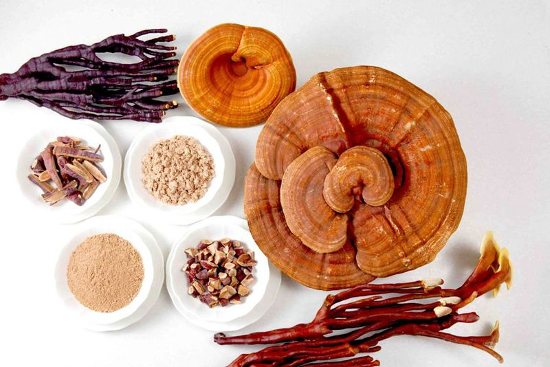 . Preliminary clinical evidence indicates maitake mushroom extracts may help to reduce symptoms of type 2 diabetes, including reducing blood sugar levels. In a 2001 study, diabetic rats and control groups were fed diets containing either 20% maitake or control diets for 100 days. After 10 weeks, fasting glucose levels were significantly lower and insulin levels were significantly higher in the group fed maitake compared to the control diet alone. (5) And in a 2002 study of insulin-resistant mice, a water-soluble extract of maitake mushroom (FXM) was shown to be as effective as the conventional diabetic medication glipizide. (6) A 2007 study in humans had similar findings when testing oyster mushrooms. In the six-month study, 89 diabetic patients included oyster mushrooms in their diets for 21-day periods (7 days with mushrooms, 7 days without mushrooms, 7 days with mushrooms—the quantity of mushrooms was not described). Blood pressure levels, plasma glucose levels, and other factors were measured at the start of the study and after each 7-day period. Eating oyster mushrooms seemed to reduce systolic and diastolic blood pressure, as well as significantly lowering blood glucose levels. These levels increased when mushroom was withdrawn and decreased again after restarting eating mushrooms. (7) Also in 2007 in Taiwan, a randomized, double-blind, Placebo-controlled study evaluating the efficacy of an extract of Agaricus mushroom (Agaricus blazei Murill) found that using the extract in conjunction with the conventional medications metformin and glipizide was more efficacious than conventional medications alone. In the study, 72 diabetic patients aged 20 to 75 who had diabetes for more than one year and had been treated with the conventional medications for more than six months were enrolled and randomized to receive either mushroom extract or placebo daily for 12 weeks. At the end of the study, the group receiving mushroom extract showed significant improvement in Insulin resistance compared to the control group, and there was a 20% increase in plasma concentration of the glucose-regulating Hormone adiponectin in the treatment group compared to a 12% decrease in the control group. (8)
. Preliminary clinical evidence indicates maitake mushroom extracts may help to reduce symptoms of type 2 diabetes, including reducing blood sugar levels. In a 2001 study, diabetic rats and control groups were fed diets containing either 20% maitake or control diets for 100 days. After 10 weeks, fasting glucose levels were significantly lower and insulin levels were significantly higher in the group fed maitake compared to the control diet alone. (5) And in a 2002 study of insulin-resistant mice, a water-soluble extract of maitake mushroom (FXM) was shown to be as effective as the conventional diabetic medication glipizide. (6) A 2007 study in humans had similar findings when testing oyster mushrooms. In the six-month study, 89 diabetic patients included oyster mushrooms in their diets for 21-day periods (7 days with mushrooms, 7 days without mushrooms, 7 days with mushrooms—the quantity of mushrooms was not described). Blood pressure levels, plasma glucose levels, and other factors were measured at the start of the study and after each 7-day period. Eating oyster mushrooms seemed to reduce systolic and diastolic blood pressure, as well as significantly lowering blood glucose levels. These levels increased when mushroom was withdrawn and decreased again after restarting eating mushrooms. (7) Also in 2007 in Taiwan, a randomized, double-blind, Placebo-controlled study evaluating the efficacy of an extract of Agaricus mushroom (Agaricus blazei Murill) found that using the extract in conjunction with the conventional medications metformin and glipizide was more efficacious than conventional medications alone. In the study, 72 diabetic patients aged 20 to 75 who had diabetes for more than one year and had been treated with the conventional medications for more than six months were enrolled and randomized to receive either mushroom extract or placebo daily for 12 weeks. At the end of the study, the group receiving mushroom extract showed significant improvement in Insulin resistance compared to the control group, and there was a 20% increase in plasma concentration of the glucose-regulating Hormone adiponectin in the treatment group compared to a 12% decrease in the control group. (8)
Fight cancer. The immunomodulating effects of medicinal mushrooms have been touted for their ability to strengthen the immune system during cancer treatment, improve survival rates and inhibit the spread of the disease. The Coriolus mushroom has shown particular promise in combating breast, lung, stomach and colon cancers; the maitake mushroom and cordyceps mushroom also have shown positive anti-tumor activity. PSK extract has been used as an adjunct to chemotherapy to improve response and survival rate in cancer patients. Hundreds of studies, most of which have been in Japan, have demonstrated this potential use of medicinal mushrooms and their extracts. A 1993 study showed that when PSK was combined with conventional surgery and radiation for lung cancer patients, those receiving the PSK extract had a 5-year survival rate of 39% for stages 1 and 2 and 22% survival rate for stage 3, compared to survival rates of 16% for stages 1 and 2 and 5% for stage 3 without the PSK. (9) A 1997 study found that when used as an adjunct to cancer therapy, PSP seems to improve immune function by increasing white cell, natural killer cell, and antibody levels. (10) A 1998 review of studies evaluating PSP to treat cancer, patients with esophageal, gastric, and lung cancers taking PSP while also undergoing radiotherapy or chemotherapy concluded that PSP helped to alleviate side effect symptoms and prevent decline in immune status. (11) A 2000 review of the Japanese studies of PSP and PSK done since the 1970s found PSP significantly improved quality of life, pain relief and enhanced immune status in 70% to 97% of patients with stomach, esophagus, lung, ovary and cervical cancers. The review also found that PSK and PSP boosted immune cell production, ameliorated chemotherapy symptoms, and enhanced natural killer cell production and function. (12) However, a 2008 review of the immunomodulating effects of mushrooms indicates the majority of studies evaluating the beneficial effects of mushrooms have been of low quality and lack standardization. The researchers claim no scientific basis exists for the use of mushrooms or mushroom extracts in the treatment of human patients, but say there is significant potential for higher-quality studies to understand the potential of mushrooms to treat humans. (13)
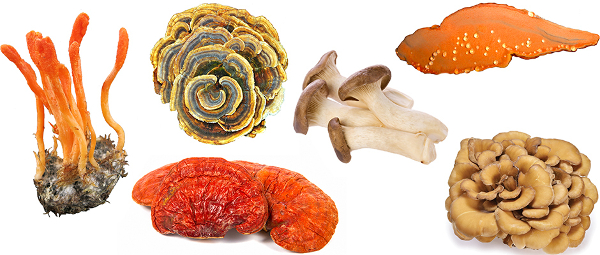
Preliminary research indicates the beta-glucan found in maitake mushrooms also has anti-tumor activity. The research suggests that maitake mushrooms can prevent metastasis of experimentally induced tumors as well as prevent tumor occurrence in normal cells. (14-16) The immune-enhancing and anti-tumor properties of cordyceps and reishi mushrooms, which are likely due to the beta-glucan and triterpene polysaccharides, also are studied for their potential to treat cancer. Studies in animals with cancer have shown that cordyceps mushrooms improve immune response, reduce tumor size and lengthen survival time. (17-20) A preliminary study in 36 patients with advanced-stage cancers found that taking cordyceps orally after chemotherapy treatment for cancer may improve quality of life and cellular immunity. (21) A 2003 study found that a specific reishi mushroom polysaccharide extract, Ganopoloy, stimulates immune function in advanced cancer patients. In the study, 34 patients with advanced-stage cancers took 1,800 mg of Ganopoly three times a day before meals for 12 weeks. Patients in the treatment group showed increases in interleukin-2 (IL-2), IL-6, Interferon-gamma, and natural killer cell activity. However, there was a concommitant decrease in IL-1 and tumor necrosis factor-alpha. (22) A 2005 review of studies indicates reishi mushrooms seem to inhibit proliferation of several human cancer cell lines in the laboratory, including, lung, liver, breast, prostate, cervix, and bladder, as well as lymphocytic leukemia. These extracts also seem to have direct cytotoxic activity against human breast, liver and cervical tumor cells, mouse sarcoma. (23) Further high-quality research is needed to establish safety and efficacy in humans.
Relieve viral infections, such as common colds, flu, bronchitis and sinusitis. A 2004 review of the beneficial effects of edible mushrooms found the immune-enhancing properties of mushrooms help to protect against cold, flu, and infections by inhibiting viral replication. However, research is lacking in this area. Studies are needed to determine the potential use of mushrooms and their extracts to treat viral infections.
Suggested Formula:
Christmas Remedies

With the joy of the Christmas season some small problems also appear; stress, anxiety, digestion problems, and after all, left over pounds.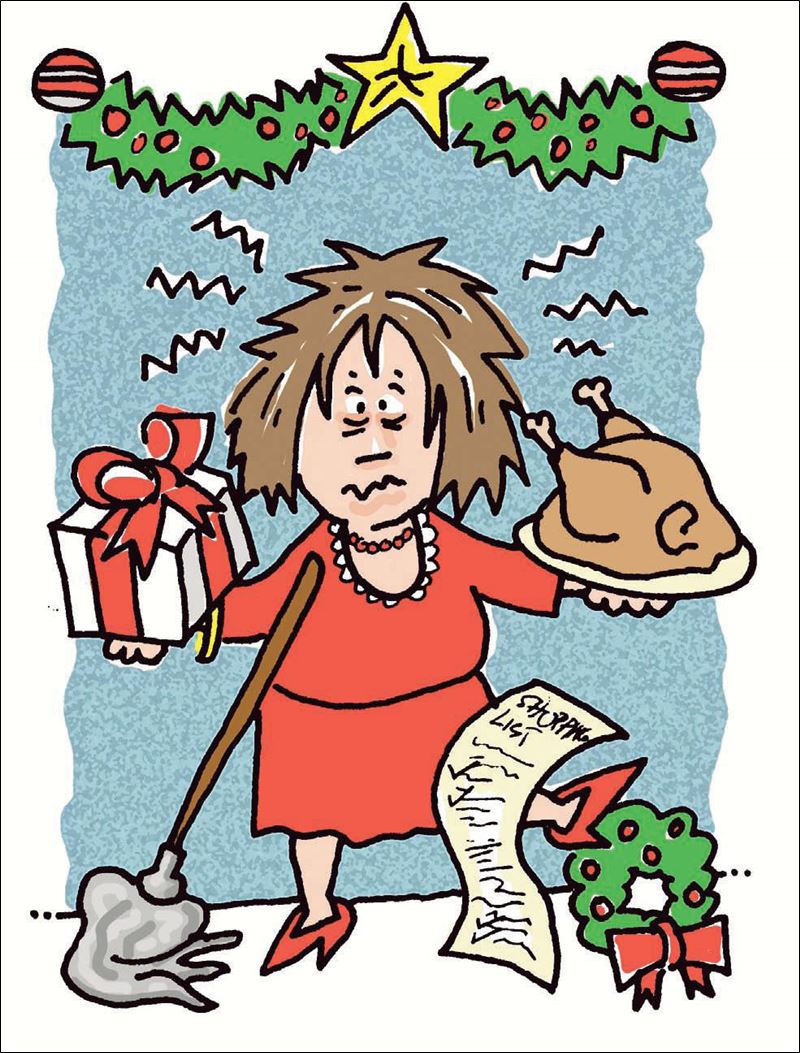
To get by a little better this holiday season, we propose a small survival guide:
When visiting family members or them coming to visit us, take the following formula in the dose of 2 tablets before arrival. Repeat the dose if the visit is too long: https://www.eqilibrium.net/en/less-stress-jade-herbal.html
The visit will be quite more peaceful!
After a copious meal where you are obviously convinced to overeat, take 2 capsules of the following formula: https://www.eqilibrium.net/en/bao-he-wan-blue-poppy.html
After the holiday season is over it is not even worth a visit to the scale, we already know what will it tell us after so many Christmas treats, chocolates, etc., so to avoid heartbreak we can take one of the following formulas even before starting Christmas:
https://www.eqilibrium.net/en/black-dragon-blue-poppy-wu-long-pian-en.html
https://www.eqilibrium.net/en/diet-jade-herbal.html
And by the way, in the case of any family member suffering from flu-like states and since we don't want to ruin Christmas with a flu, it is better to prevent it with a protective formula of the immune system, there are many, here are two or three that never fail:
https://www.eqilibrium.net/en/astragalus-membraneceus-huang-qi.html
https://www.eqilibrium.net/en/five-mushroom-formula-peoples-herbs.html
https://www.eqilibrium.net/en/yu-ping-feng-san-blue-poppy.html
Happy Holidays!

CANDIDIASIS
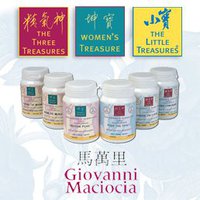 From Giovanni's file, the presentation of the case of a woman suffering from candida: diagnosis and treatment with acupuncture and herbal remedies.
From Giovanni's file, the presentation of the case of a woman suffering from candida: diagnosis and treatment with acupuncture and herbal remedies.
The 40-year-old patient says he has suffered from candida for "a long time." She complains of redness, pain and itching around the vagina, symptoms that are worse before and after the cycle. Her period is regular, lasts a week and is not painful. She suffers from premenstrual tension which mainly manifests itself in the form of depression and fatigue. She also reports back pain, feeling cold, frequent urination, dizziness, tinnitus, and night sweats. During the anamnesis it was found that she often feels that her mouth is crawling. Her tongue is slightly red on both sides, swollen and with a slimy coating. The pulse is weak on the right and wrinkled on the left.
Diagnosis
Candida is evidently due to Damp-Heat, as evidenced by vaginal redness, pain, and itching; The presence of dampness is also confirmed by the swelling of the tongue and the slimy patina. There is an underlying deficit of Spleen and Kidney Yang; the latter, in particular, is manifested by back pain, feeling cold, frequent urination, dizziness and tinnitus.
Treatment
In cases like this, it is important to decide whether to focus on mitigating the deficit or eliminating the pathogenic factor, specifically humid heat. In view of the intensity of the candida, I decided to focus on the treatment of the Manifestation and, therefore, on the elimination of the pathogenic factor, that is, on the dissolution of the dampness and on the purification of the Heat of the Lower Heater. Therefore, I prescribed Drain the Jade Valley ™ to dissolve dampness, purify heat, and stop vaginal itching. I have also prescribed these herbs to use externally as douches: She Chuang Zi Fructus Cnidii monneri, Ku Shen Radix Sophorae flavescentis, Shi Gao Gypsum, Huang Bo Cortex Phellodendri, and Bai Zhi Radix Angelicae dahuricae.
I also used acupuncture mainly treating the following points:
-LU-7 Lieque and KI-6 Zhaohai to open the Nave dof Conception.
-SP-9 Yinlingquan, SP-6 Sanyinjiao and BL-32 Ciliao to dissolve the dampness from the lower heater.
-KI-7 Fuliu and BL-23 Shenshu to tone the Yang of the kidneys
-Ren-12 Zhongwan to dissolve dampness.
The patient responded well to the treatment and the combination of the internal treatment using Drain the Jade Valley ™ with the external wash resolved the candida problem in 10 months. It is planned to continue the treatment with the toning of the Spleen and Kidney.
By Giovanni Maciocia
Chinese Herbal Medicine formula studied to improve cancer therapy
Professor Ming Hu from the University of Houston - pharmacy is developing and testing an ancient Chinese herbal medicine formula, first described in AD 280, to improve cancer therapy. Hu believes that Xiao Chai Hu Tang can protect people taking the chemotherapy drug Irinotecan from a deadly side effect: severe late-onset diarrhea.
Our goal with Xiao Chai Hu Tang is to allow more people to benefit from treatment with irinotecan, which is often the drug of last resort for patients with late-stage or metastatic cancer. "
Ming Hu, the Diana SL. Chow Drug Discovery and Development Professor at University of Houston.
The clinical use of irinotecan is severely limited by severe diarrhea that results in poor quality of life, hospitalization, and even death.
Hu and her colleagues Romi Ghose, associate professor of pharmacy at UH and Song Gao of Texas Southern University, received $ 996,162 from the National Cancer Institute to investigate the effectiveness of the ancient formula. They will also work with Lijun Zhu of Guangzhou University of Chinese Medicine in China to determine the agent's effectiveness in a clinical trial.
Irinotecan is undoubtedly a powerful weapon against cancer, but many who take it develop severe late-onset diarrhea, probably caused by SN-38, the active metabolite of the drug. In the intestine, SN-38 can damage intestinal cells and affect their renewal.
"Intestinal cells have UGT enzymes that detoxify the active metabolite of the drug, but we found that SN-38 can also inactivate and reduce UGT enzymes in the intestine. This creates a vicious cycle. About 1 in 5 patients will fall into this vicious cycle, which it leads to discontinuation of therapy, decreased efficacy, or even death, "Hu said. She has shown that Xiao Chai Hu Tang protects UGT enzymes and reduces severe diarrhea, and with the new grant will develop it further, for testing and approvals.
Xiao Chai Hu Tang is actively used in China, Japan, and Korea for liver protection. This is the first case in which it has been shown to protect the gut from SN-38 (the active metabolite of the drug irinotecan), making UGT enzymes more resistant to the impact of SN-38.
"Our long-term goal is to develop experimental therapies and / or nutritional complementary approaches to reduce severe late-onset diarrhea so that patients can maintain their chemotherapy," Hu said.
The benefits of Xiao Yao San
Xiao Yao San is a blend of herbs used for centuries in Traditional Chinese Medicine (TCM). Traditional Chinese medicine practitioners believe that Xiao Yao San works by clearing stagnation in the liver to improve the flow of qi (energy). Stagnant liver qi is said to affect the blood and contribute to stress / mood swings, pain, irritability, constipation, abdominal pain, premenstrual syndrome (PMS), and irregular menstrual periods.
Xiao Yao San can be mixed by hand with the herbs themselves, but it is also sold as a dietary supplement. Although the blends may vary, the herbs that are most frequently combined in Xiao Yao San are:
Chai Hu (Radix Bupleuri)
Bai Zhu (Rhizoma Attraylodis Macrocephalae)
Fu Ling (Poria)
Dang Gui (Radix Angelicae Sinensis)
Bai Shao (Radix Paeoniae Albae)
Sheng Jiang (Rhizoma Zingiberis)
Bo He (Herba Menthae Haplocalycis)
Gan Cao (Radix Glycyrrhizae)
A variation called Jia Wei Xiao Yao San contains all eight herbs with the addition of peony bark and gardenia fruit.
Benefits
Although there is limited scientific research looking at the effectiveness of Xiao Yao San for therapeutic reasons, and most of what does exist are animal studies, there are a handful of diseases and conditions for which the herbal blend appears promising.
Depression
An animal study published in Phytotherapy Research suggests that Xiao Yao San may help alleviate depression by enhancing amino acid metabolism and altering the intestinal microflora.
An evidence-based review published in Complementary and Alternative Medicine included 26 randomized controlled trials involving 1,837 people with depression. The studies compared Xiao Yao San with a placebo and different antidepressants, and also looked at it as an adjunct to antidepressants.
The review concluded that Xiao Yao San appeared to improve the efficacy of antidepressants.
Post-traumatic stress disorder
In 2009, researchers found that Xiao Yao San reduced stress-induced anxiety behaviors in rats. A later study linked this effect to allopregnanolone, a neurosteroid, a natural hormone derived from progesterone identified as a key player in the development of PTSD.
Again, using stress-induced rats, the researchers found that Xiao Yao San not only reduced anxiety behaviors, but also increased brain levels of allopregnanolone.
The anti-inflammatory compounds in Xiao Yao San may be key to its beneficial impact on PTSD, according to a 2017 study. Researchers found that these compounds, previously shown to alleviate depression, impact neurobiological pathways associated with PTSD symptoms. .
Additionally, a 2017 study found that the blend counteracts oxidative stress using pathways similar to those of the antidepressant Prozac (fluoxetine), a common treatment for PTSD.
Stress
Research investigating Xiao Yao San's effect on stress is limited to rodent studies. The stress hormone cortisol impacts neurons in the hippocampus, the part of the brain responsible for concentration, memory, and mood. A study in rats found that Xiao Yao San appears to protect against this.
Indigestion
Xiao Yao San is traditionally used to soothe a "sour" stomach. Current research suggests that the herbal blend helps relieve functional dyspepsia, better known as chronic indigestion.
According to a review of 14 studies published in the Journal of Gastroenterology and Hepatology, Xiao Yao San can help relieve stomach discomfort, nausea, bloating, and belching associated with indigestion.
The researchers noted that the herbal preparation appears to work just as well as prokinetic drugs, drugs that increase intestinal motility, such as Motilium (domperidone) and Reglan (metoclopramide).
A 2018 review of Chinese herbal remedies for indigestion also confirmed these results and suggested that Xiao Yao San was more effective than prokinetic drugs.
Formulas based on the Xiao Yao San formula:
Desbloquear (Unblock) (75 comprimidos)
Xiao Yao San (120 cápsulas)
Xiao Yao San (60 comprimidos)
Jia Wei Xiao Yao San (Bupleurum y Paeonia)
Dan Zhi Xiao Yao San
Coronavirus Protocol (summary)
Chinese health includes phytotherapy of Traditional Chinese Medicine for the treatment of Wuhan coronavirus
The formulas below can be used for any respiratory infection, be it 2019-nCoV, pneumonia or the flu. 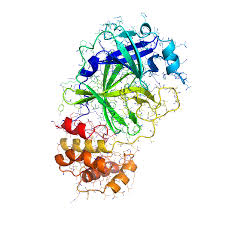
Prevention measures
People who have been in contact with potential patients and whose immune system is weak are recommended "Yu Ping Feng San", adding Astragalus (Astragalus Membraneceus).
Plant-based health protocol for the early stage of the disease
When the virus has already been incubated and the infection is installed, showing the first symptoms, the Protocol advises, among other solutions, a modification of the formula "Huo Po Xia Ling Tang" together with the preparation "Xiao Chai Hu Tang".
For the middle phase it is advisable to add the formula "Huang Lian Jie du Tang".
Formulae links:
https://www.eqilibrium.net/en/yu-ping-feng-san-blue-poppy.html
or
https://www.eqilibrium.net/en/yu-ping-feng-san.html
https://www.eqilibrium.net/en/astragalus-membraneceus-huang-qi.html
https://www.eqilibrium.net/en/xiao-chai-hu-tang-blue-poppy.html
https://www.eqilibrium.net/en/drain-fields-giovanni-maciocia-en.html
https://www.eqilibrium.net/en/huang-lian-jie-du-tang.html
Sources:
“TCM-cured patients of novel coronavirus infection discharged from hospital”. Source: Xinhua| 2020-02-03 20:35:14|Editor: huaxia.
“TCM plays key role in treatment”. By Wang Xiaodong in Wuhan | China Daily | Updated: 2020-02-07 08:11.
“100 more traditional Chinese medicine workers dispatched to Wuhan”. Source: Xinhua| 2020-01-27 21:13:37| Editor: huaxia.
“Chinese Herbal Medicine Treatment Protocols for Wuhan Pneumonia”. Shelley Ochs. TCMinBeijing. Enero, 2020.
TCM Principles for Weight Loss
TCM Principles for Weight Loss
In TCM, no matter what therapeutic approach is applied, there are always guidelines behind it. These basic principles are derived from different diagnostic theories, such as the eight principles or organs (zang fu) theory. According to the TCM understanding of obesity, the underlying principles for weight loss treatment are:
1. Harmonize the stomach to promote fat digestion 
Hawthorn helps promote digestion.
A majority of obese people consume an excess amount of greasy foods such as sweet cakes and fried meats. The stomach will have trouble digesting these foods, and thus they will be detained in it. Symptoms such as distention in the gastric and abdominal areas, backward flow of stomach contents into the mouth, foul breath and a greasy coating on the tongue may be present. Herbs like hawthorn, malt and radish (seed) can be used to promote the secretion of digestive fluids and help the digestion of fatty materials in the stomach.
2. Activate the blood to remove the stasis
Chinese angelica helps promote blood flow.
High levels of lipids (fats) in the blood that lead to sclerosis of blood vessels are regarded as a phenomenon of blood stasis in TCM. Methods of activating the blood flow and removing blood stasis not only promote the blood flow, they can also help to lower the lipid content in the blood and decelerate the sclerosis process. Herbs most commonly used in this way are Chinese angelica, Szechuan lovage, red sage root, red peony root and notoginseng.
3. Relieve chest stuffiness to eliminate phlegm
Trichosanthes (gua lou) helps the lungs get rid of phlegm evils.
From a TCM viewpoint, fatty tissue is a kind of turbid phlegm. The excessive phlegm associated with obesity leads to shortness of breath during exercise, chest oppression and dizziness. In more severe conditions, when both phlegm and heat evils accumulate, individuals will present with an impulsive, easily provoked temper, high blood pressure, a distending headache and insomnia. A yellow and greasy fur usually covers the tongue. Herbs like trichosanthes (gua lou), Chinese chive bulbs, peel of various citrus fruit, mandarin orange peel and trifolicate orange enhance the lungs to disseminate and liquefy the phlegm evils.
4. Remove the stagnation of the liver and gall bladder
Capillary Artemisia (yin chen) helps with proper functioning of the liver and breakdown of fats.
The liver plays an important role in qi (vital energy) circulation, as well as the enhancement of food digestion and blood flow. The gall bladder secretes bile and aids in the digestive process. Proper functioning of the liver and the gall bladder assists the break down of fat. Herbs most commonly used to assist this process include capillary Artemisia (yin chen), zedoary rhizome(e zhu), turmeric (jiang huang) and cassia seed (jue ming zi). This type of treatment is effective for individuals who suffer from a fatty liver and gall stones.
5. Induce diuresis (excretion of urine) and eliminate dampness
Indian bread (fu ling) helps induce diuresis.
Obesity involves the disorder of fluid metabolism. When there is dysfunction of distribution or excretion of body fluids, symptoms can present such as swollen eyelids, edema (retention of fluid in the tissues), obesity or other conditions. Inducing diuresis (excretion of urine) is a direct way to promote the elimination of excessive dampness. Herbs most commonly used in this way are wax gourd, water-plantain (ze xie), Indian bread and plantain seed.
6. Induce purgation by promoting bowel movements
Rhubarb (da huang) is commonly used to promote regular bowel movements.
An obese body gathers too much turbid waste and fatty tissues. The large intestine is usually under-functioning and constipation can also add to the problem. Promoting regular bowel movements reinforce excretion and eliminate body wastes. Herbs commonly used to promote regular bowel movements are rhubarb, bushy knotweed (hu zhang) and fleeceflower root (shou wu).
The above principles aim to expel excessive evils contributing to obesity. Several principles are usually combined in real practice. However, if individuals are under-functioning in the spleen and kidneys, then tonifying treatments should be considered. They help to build up the qi (vital energy) inside the body as well as facilitate expelling evils.
Article by ShenNong
Based on this article, we recommend one of the TCM formulas that has more success rate shown in the performance of the functions required in the process of weight loss, the
And also, mainly for those intolerant to cafeine: DIET by Jade Herbal
Take Good Care of Your Qi
Qi is no longer a strange word to many in the West, thanks to people like Dr. David Eisenberg. His book, titled “Encounters With Qi,” describes his experience as the first American physician allowed to visit China 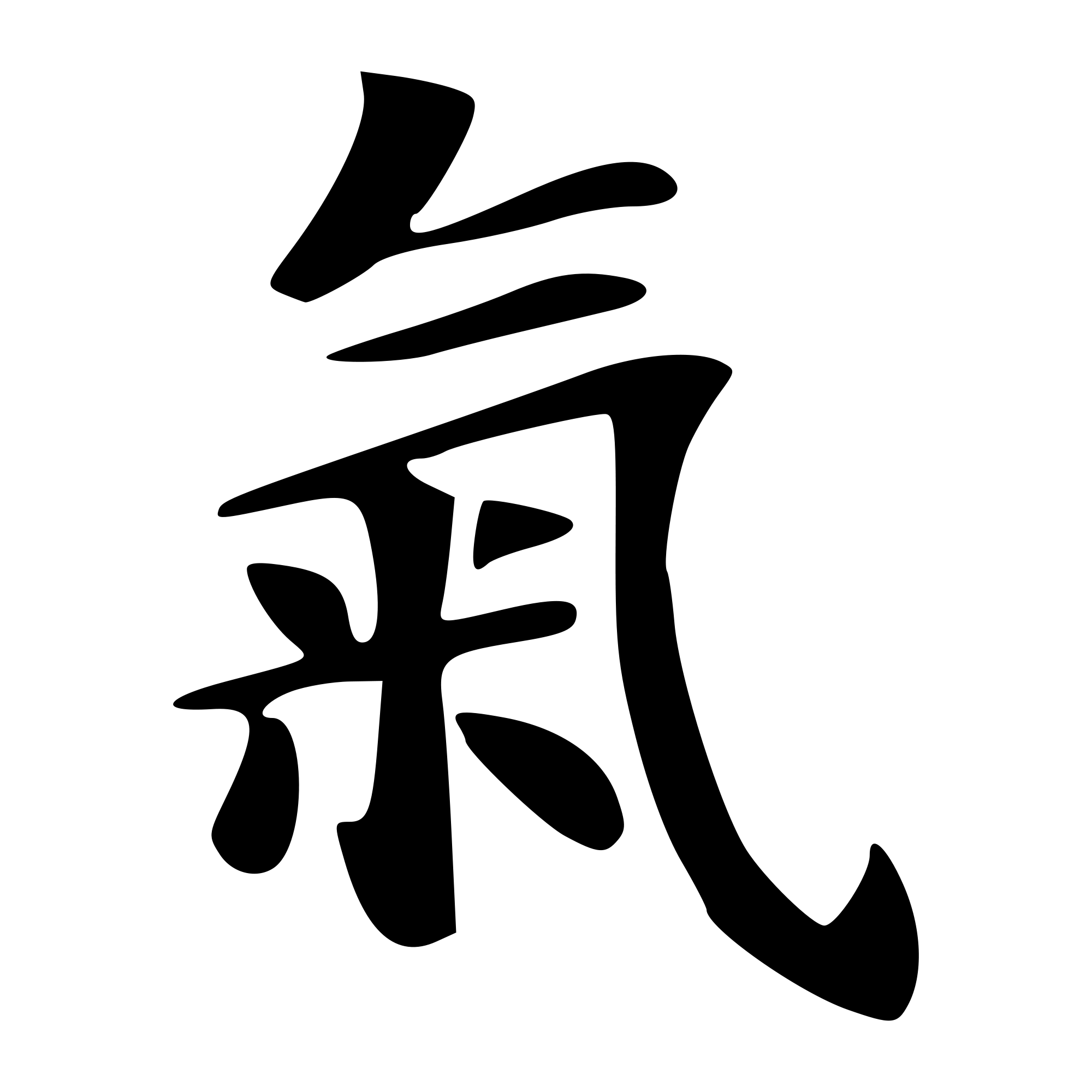 after President Nixon’s efforts to open communication between the United States and China.
after President Nixon’s efforts to open communication between the United States and China.
Definition of Qi
First, it means the energy that circulates around us. For different seasons, different qi is dominant. For example, there is wind for the spring, heat for the summer, dampness for the late summer, and dryness for the fall. In the winter, we feel there is a cold qi in the air.
Second, it refers to the energies that manifest inside our bodies. We can feel them. Blood and fluids circulate in the body as if there is wind moving them around. Some people feel coldness in their extremities, sometimes to the point that they have to wear socks to sleep.
Some people feel heat as if they are having a fever, menopausal hot flashes, or the heat that follows chemotherapy for breast or prostate cancer. When people have too much dampness in the system, it manifests as swollen joints, a thick greasy coating on the tongue, diarrhea, or a sense of heaviness in the body.
Third, qi means emotions. When someone is very angry, we say this person has a “sky-rocketing anger qi,” and when a person is very happy, we say he is bathed in the joyful qi. Indeed, the emotions are forms of energy, and therefore forms of qi.
Fourth, it means the air. When people breathe, we say they breathe in qi and breathe out qi.
Fifth, it means the energy that maintains the functions of every organ. Therefore, the heart has the heart qi, the liver has the liver qi, the blood has the blood qi, and the digestive system has its qi. When it moves in the right direction, sufficiently, and with balanced properties, we have a healthy body and a peaceful mind.
Trouble With Qi
When qi is in trouble, the body gets sick and becomes dysfunctional. For example, when qi moves in the wrong direction or becomes rebellious, people may feel nauseous and short of breath, or they may vomit, wheeze, and cough.
When qi is collapsing, people may have trouble controlling their bowels and bladder, or have prolapsed organs. When the properties of qi are out of balance, people experience all kinds of symptoms, including chills, fever, tremor, swollen joints, night sweats, high blood pressure, depression, mania, or agitation and anxiety.
Qi circulates in every level of our bodies, from the surface to the inside; it reaches everywhere and leaves nothing untouched. It moves inside channels that we call meridians. The structure of meridians is still too microscopic to be visible using modern technology.
But the forefathers of Chinese medicine had the technology or the natural ability to visualize and map this energetic level of human existence. They discovered that if we experience emotional distress, our internal energy is affected, causing blockages and misdirected qi.
If the condition is not corrected, it may cause further damage by developing into severe pain, a tumor, blocked arteries, cancer, or degenerative changes, and the like. As you can imagine, the human body has many places where energy can get blocked.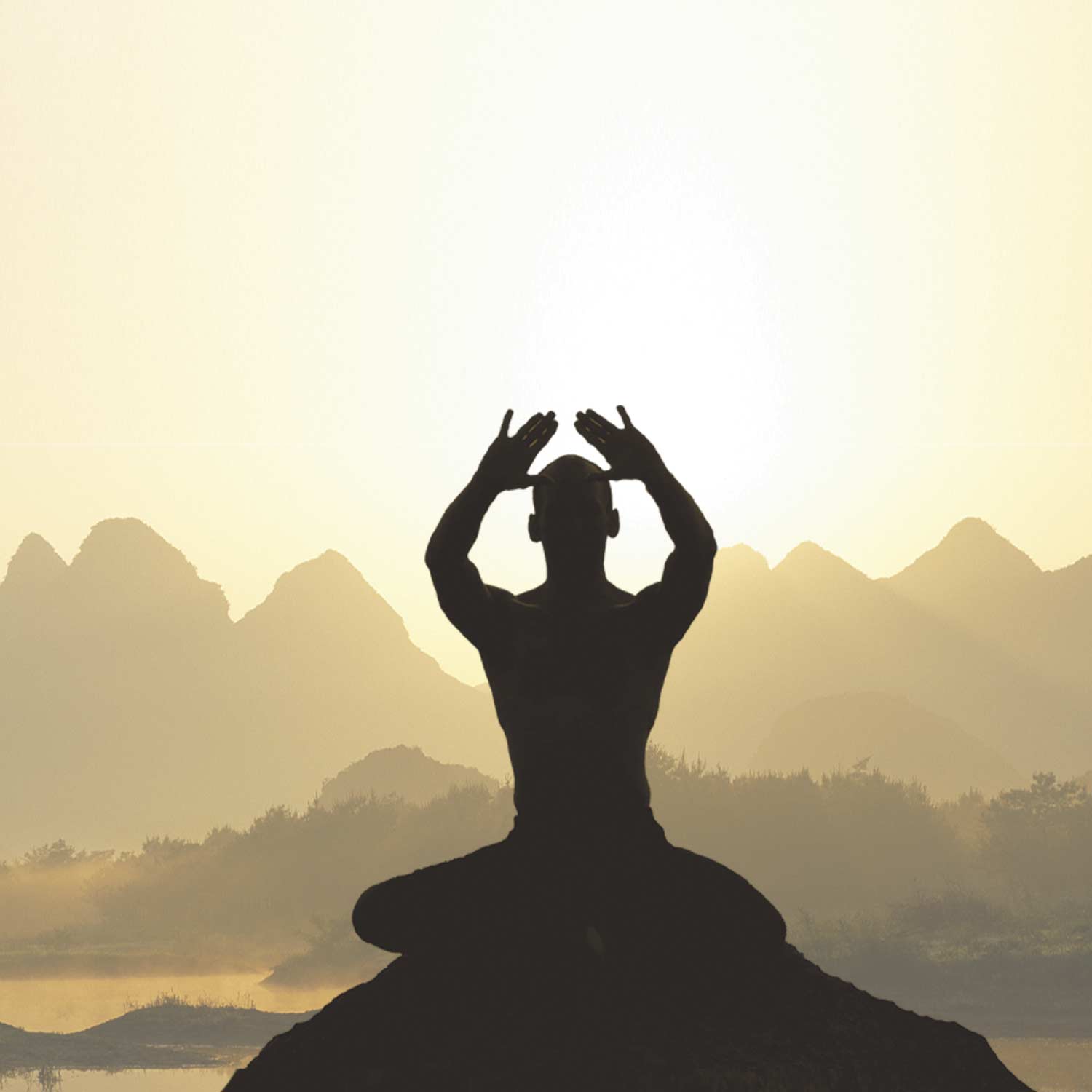 When qi is deficient, it may cause weakness, slow metabolism, aging, and organ failure. And when it finally disappears, we die.
When qi is deficient, it may cause weakness, slow metabolism, aging, and organ failure. And when it finally disappears, we die.
Therefore, to promote good health, prevent illness, and slow down the aging process, we must take good care of our qi.
There are two kinds of qi. One is inherited from our parents at the time of conception. It is called prenatal qi and is mostly stored in the kidney meridians. Prenatal qi is used in reproduction and then passed to offspring. The second is postnatal qi, which is mostly obtained from food and air, thanks to the functioning of the lung and spleen meridians.
To maintain prenatal energy, protect, preserve, and replenish it as much as you can. To maintain postnatal energy, one should eat a healthy and balanced diet, avoid excessive eating or drinking, sleep well, and adopt a moderate level of physical exercise. Consider meditation and appropriate qigong practice. Managing one’s emotional stability is the key to keeping the energy channels open and energy flowing smoothly.
Herbal remedies, when used properly, can help, in particular, to supplement deficient qi. Acupuncture can be an effective tool to help unblock the energy channels, redirect and facilitate energy flows, and balance energy properties when it is used skillfully based on a thorough and accurate evaluation.
So ask yourself, “Did I take good care of my qi today?”
Herbal formulas to complement Qi:
IMMORTAL QI
HE SHOU WU
YU PING FENG SAN
Cordyceps Sinensis Benefits
Introduction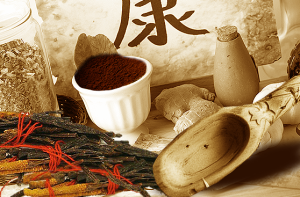
Cordyceps is a rare and exotic medicinal mushroom, known in China for centuries. One that reportedly
has a number of far reaching medicinal effects. Most people in the West have come to know this rare
herbal medicine in only the last twenty years or so. During that time, modern scientific investigation into
its seemingly miraculous range of healing powers has proven what Chinese practitioners have noted for
centuries: That it works well in combating a myriad of medicals problems.
Much of what is known about Cordyceps sinensis we owe to the research of Dr. Georges Halpern, a physician and professor emeritus with the University of Hong Kong, and author of several books about Cordyceps.
Research suggests that Cordyceps may improve the BIO ENERGY status of animals humans. This would happen because Cordyceps improves the internal balance mechanism, thus making the utilization of OXYGEN more efficient. These properties may account for the overall physical enhancement, the added endurance, and the anti-fatigue effects which are seen in humans using the Cordyceps supplement.
1. Cordyceps Improves the Respiratory Function
Several scientific studies have demonstrated the benefits of Cordyceps sinensis in alleviating the symptoms of several respiratory illnesses including chronic bronchitis and asthma (Reference 2, Chapter “Effects on the Respiratory System”, pages 429-432). In a double blind, placebo controlled study with 30 elderly volunteers Cordyceps significantly improved the maximum amount of oxygen these people were able to assimilate (Reference 4).
2. Cordyceps increases cellular Oxygen Absorption by up to 40%
(Lou Y, Liao X, Lu Y. Cardiovascular pharmacological studies of ethanol extracts of Cordyceps mycelia and Cordyceps fermentation solution. Chinese Traditional and Herbal Drugs 1986;17(5):17-21,209-213) Chronic obstructive pulmonary diseases improvement of 40% after Cordyceps supplement. (Wang WQ. J. Administration Traditional Chinese Med 1995;5 (supp;):24)
3. Cordyceps Improves the Functioning of the Heart
Numerous studies have demonstrated the benefits of Cordyceps sinensis on heart rhythm disturbances, such as cardiac arrhythmias and chronic heart failure (Reference 2, Chapter “Effects on the Cardiovascular System”, pages 436 – 441).
An even more vigorous study was conducted using “in vivo” mouse model induced acute Pulmonary Edema (Pneumonia) which causes systemic lack of oxygen, acidic body, and death. Research results show that animals taking Cordyceps had a significantly greater survival rate of 20% mortality vs. 80% mortality in 30 minutes. This is a startling 400% improvement. (From Wan F, Zhang S. Clinical observations of fermented Cordyceps sinensis (Cs-4) in antitussive, expectorant, and antathematic effects. Collection on the Basic Medicinal and Clinical Studies of Submerged Culture Cordyceps sinensis. Beijing, Nanchang, China:Jiangxi TCM/IMM, 1985:35-39)
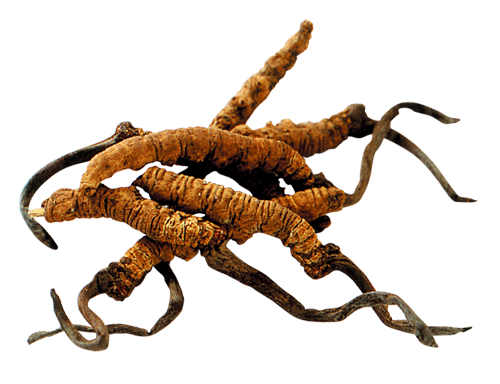 4. Cordyceps Helps Maintain Cholesterol
4. Cordyceps Helps Maintain Cholesterol
Four excellent studies have demonstrated that Cordyceps sinensis helps to lower total cholesterol by 10 to 21% and triglycerides by 9 to 26%. At the same time it helps to increase HDL-cholesterol (“good cholesterol”) by 27 to 30% (Reference 1, Chapter “Effects on blood lipid metabolism and arteriosclerosis”, pages 299 – 301).
Blood Cells – Improves Blood Cell Viability & Function.
Genetic – Promotes DNA Repair
Liver Protection - Improves Liver Functions, helps with Hepatitis and Cirrhosis Sub chronic and chronic hepatitis on related liver diseases are more prevalent than most people think. Liver is the living filter of the human body, cleaning the blood and all other fluids of impurities. There is no way for you to survive, much less feel healthy, without a functioning liver.
Research clinical trials on 33 patients with Hepatitis “B” and on another 8 patients with cirrhosis taking Cordyceps supplement showed 71.9% improvement on “Thymol Turbidity Test” and 78.6% improvement in” SGPT Test” both of these are enzyme test showing improving functions of the liver. (Zhou LT, Yang YZ, Xu YM, Zhu QY, Zhu YR, Ge XY, Gao JD. Short term curative effect of cultured Cordyceps sinensis (Berk.) Sacc. Mycelia in chronic hepatitis B. China J Chinese Materia Medica 1990;15(1):53-55)
5. Chronic kidney diseases improvement
(3) Chronic kidney diseases improvement of 51% after only one month with Cordyceps supplement.(Jiang JC, Gao YF. J Administration Traditional Chinese Med 1995;5(suppl):23-24)
6. Cordyceps Reduces Tumor Size in Cancer Patients
Several clinical studies have been conducted in China and Japan with cancer patients (References 1 and 2). The studies were done with CSE (Cordyceps sinensis mycelium) using a therapeutic dose of 6 grams per day (= 4 capsules twice daily). In one study with 50 lung cancer patients administered CSE in conjunction with chemotherapy, tumors reduced in size in 46% of patients. A study in cancer patients with various types of tumors found CSE (6 g/day for over 2 months) improved subjective symptoms in the majority of patients. White blood cell counts were maintained and tumor size was significantly reduced in about half of the patients. Researchers in Japan reported that CSE enhances the general reactivity of the immune system in individuals with cancer. To discover this, they subcutaneously injected mice with cancerous (lymphoma) cells and then orally administered CSE. This lead to a reduction of tumor size and prolongation of the host survival time. CSE also improved the antibody responses.
7. Immune System
Increases NK cell activity, makes more MUSCLE – Increases Power, builds better/younger cells.
Recharge the Protective Army of NK cells – Your body’s ability to fight infections and tumors depends on the availability of Natural Killer (NK) Cells. These are essential first lines of defense for our body’s protection mechanisms commonly known as the Immune System.
Several scientific studies of Cordyceps have especially focused on Natural Killer (NK) cells and Cordyceps effect on them and cancer formation. One such in-vitro study demonstrated Cordyceps adding significant enhancement of NK cell activity in normal individuals as well as leukemia stricken individuals. (Liu C, Lu S, Ji MR, Xie Y. effects of Cordyceps sinensis on in-vitro natural killer cells.
Chinese J Integrated Traditional Western Med (Chung-Kuo Chung His I Chieh Ho Tsa Chih) 1992;12(5):267-269) showed that natural Cordyceps enhanced the NK cell activity of normal patients by 74% and increased the NK activity of leukemia patients by 400% and similar improvements of NK cell activities was found in big melanoma cancer (Xu RH, Peng XE, Chen GZ, Chen GL. Effects of Cordyceps sinensis on natural killer activity and colony formation of B16 melanoma. Chinese Med J 1992;105(2):97-101)
8. Improvements in the Immune System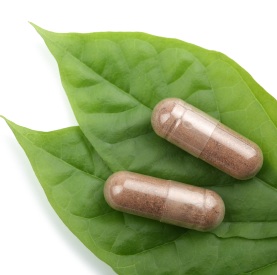
The improvements in the Immune System were so impressive that Dr. Zhu at the Journal of Alternative and Complementary Medicine 1998 stated: “Because of the above profound influence on immune functions, natural Cordyceps products have been used in many clinical conditions in patients with altered immune functions.”
9. Anti-aging
The First Anti-Aging Supplement Known to Mankind
It’s An Anti-Aging Fighter with clinical research proof in controlled studies which showed that elderly patients suffering from fatigue and some senility related symptoms reported. (1) Improvements in the reduction of fatigue 92%, of feeling cold 89%, in dizziness 83%, after taking Cordyceps for 30 days. Patients with respiratory/breathing problems felt physically stronger and some were able to jog for 600 ft. (Cao A, Wen Y. J Applied Traditional Chinese Med 1993;1:32-33)
10. Cordyceps Protects against Free Radical Damage
Several studies have shown that Cordyceps sinensis protects against the damages caused by free radicals, and as such has powerful antioxidant properties (Reference 1, Chapter “Äntisenescence and Oxygen-Free Radical Scavenging Activity”)
11. Cordyceps Reduces Fatigue
Several studies with animals have demonstrated that Cordyceps sinensis increases the cellular energy production and oxygen supply. A double blind, placebo controlled investigation showed a marked reduction in fatigue in elderly patients when they were given three grams of Cordyceps daily. In another study, Cordyceps sinensis improved shortness of breath and reduced fatigue in patients suffering from chronic heart failure (Reference 1, Chapter “Improvement of physical performance and quality of life”, pages 293 – 295).
12. Cordyceps Helps Discomforts from Tired Legs
Several studies have shown that Cordyceps sinensis improves the flow of blood in the body by relaxing the smooth muscles of the blood vessels allowing them to expand. Cordyceps also improves the functioning of the heart and lungs (see above). Cordyceps therefore prevents or reduces the contraction of blood vessels which interferes with the flow of blood vessels in the legs, the main cause of tired legs (Reference 2, Chapter “Effect on the Cardiovascular System”, pages 436 – 441).
13. Endurance & Stamina
Reduces muscle Soreness, Enhances Recovery, Promotes Better Oxygen efficiency,
14. Fitness
Increases ATP Synthesis, Promotes Faster Energy Recovery, Reduces Fatigue, Improves Physical Function, Provides More Stamina.
15. Cordyceps Improves Stamina and Athletic Performance
Several studies with animals have shown that Cordyceps sinensis increases the cellular energy production and oxygen uptake ( Reference 1, Chapter “Improvement of physical performance and quality of life”, pages 293 – 295). A study with mice demonstrated their improved swimming capabilities after six weeks of Cordyceps supplementation compared with a control group (Reference 3, page 260).
16. Cordyceps radically increases cellular energy
Cellular energy, which is also known scientifically as the ATP/IP ratio. Cordyceps has been clinically proven to increase cellular Bio-Energy by as much as 55% (Reported XU C.F et al in ZHU J-S, Halpern GM, Jones K. The Scientific rediscovery of a precious ancient Chinese herbal regimen: Cordyceps sinensis: Part I. J Alt Comp Med 1998;4(3):289-303.)
17. Cordyceps Combats Sexual Dysfunction
Three separate Chinese double blind and placebo-controlled studies with over 200 men with “reduced libido and other sexual problems” showed remarkably similar results. On average, 64% of the Cordyceps sinensis users reported significant improvement at the conclusion of the experimental period compared with 24% of the placebo group. In another double blind, placebo controlled study conducted with 21 elderly women with similar complaints, 90% reported improvements of their condition following the use of Cordyceps, compared with none in the control group (Reference 1).
18. Hormones – Adrenal Thymus, Mitochondrial energy.
Dramatic Natural Improvements are seen in endocrine hormone levels, in fertility, and in Sexual Libido for men and women.
19. Sexual Function
Improves Libido and Quality of Life in Men & Women, Fights infertility, Increases Sperm Count, Increases Sperm Survival.
(1) Research on animal studies shows cordyceps increases natural sex hormones(Wan F, Guo Y, Deng X. Chinese Traditional Patented Med 1988;9:29-31)
(2) Prevention and improvement of adrenal glands and thymus hormones, and infertile sperm count improve by 300% after cordyceps supplement.(Huang Y, Lu J, Zhu B, Wen Q, Jia F, Zeng S, Chen T, Li Y, Xheng G, Yi Z.. Zhongchengyao Yanjiu 1987;(10):24-25)
(3) Human clinical studies involving both men and women of 189 patients with decreased libido and desire showed improvement of symptoms and desire of 66% (Wan F, Guo Y, Deng X. Chinese Traditional Patented Med 1988;9:29-31) and
(4) Another double blind study by the Institute of Materia Medica in Beijing, China showed a woman improvement of libido and desire at 86%. (JIA-SHI ZHU, M.D., Ph.D. The Journal of Alternative & Complementary Medicine, Vol.4, Number 3, 1998, pp.289-303)
(5) The most dramatic physical proof came from Fertility Study (Guo YZ. J Modern Diagnostics Therapeutics 1986;(1):60-65) involving a clinical research of 22 males showed that cordyceps supplement increased clear evidence of 33% increase in sperm count, decreased 29% incidence of sperm malformations, and a 79% increase in survival rate after 8 weeks of cordyceps supplement.
- Increases ATP production - Increases Oxygen Utilization
- Decreases Blood Pressure - Regulates Blood Sugar
- Decreases Appetite - Increases Libido & Sexual Function
- Decreases Alcohol Desire
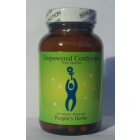 Product Applications
Product Applications
Sports and Performance Enhancement
Alcohol-ex Preparations
Weight Loss
Sexual Function in Men and Women
Diabetes Control Supplements
Jet Lag
Immunomodulation
Veterinary Medicine
Prevention & Treatment of Colds & Flu
PREVENTION & TREATMENT OF COLDS & FLU
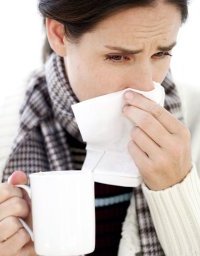
Over the centuries, traditional medical practitioners have used herbs to ward off infections and relieve cold and flu symptoms. But which of these herbs are most effective? Most appropriate? Most safe? Which are used to prevent colds and flu and which relieve symptoms?
Using herbal formulas to prevent and treat colds and flu is one of the best-developed and most successful aspects of traditional Chinese medicine. Specific treatment practices and formulas have been handed down unbroken from the earliest schools to the modern universities of China.
PREVENTING COMMON COLDS & FLU
In Chinese medicine, prevention of colds and flu is addressed by tonifying the organ system (the physical and energetic aspects of the organ) most affected by what are called in the medicine, "external wind attacks" (e.g., wind cold attack or wind heat attack). In the case of colds and flu, that would be the Lungs. Additionally, those organ systems that help build a person's defense against external attacks will be strengthened. That would include those organs that contribute to building the immune system including the Lungs, Spleen and Kidneys (perhaps, even the Liver). Lastly, if a person has pre-existing conditions that are exacerbated by contracting a cold or flu, such as asthma or other respiratory diseases, correcting imbalances in those areas will also be addressed.
The best time to start preventive measures is long before the cold/flu season. For most people, that would be in early fall. However, it's never too late to start a prevention program. For some people it would be advisable to start a prevention program in August. Such cases would be those with respiratory diseases, compromised immune systems, and those who have a history of easily contracting colds or flu.
Top Antiviral Herbs in Chinese Medicine
Huang Qi - Astragalus
Cordyceps Sinensis
Ganoderma Lucidum
Effective Herbal Formulas in Chinese Medicine
Deficiency Pattern: Most people with chronic illness fall into the Deficiency category. They are the targets of cold and flu during every seasonal change and in every flu season. Their energy is low, their immune systems are weak, and they have trouble recovering from prolonged illness. Women with a Deficiency condition often catch a
cold before every menstrual cycle. When Deficiency-pattern people are hit by cold or flu, they should use specific formulas to boost immune system: 
http://www.eqilibrium.net/en/yu-ping-feng-san-blue-poppy.html
http://www.eqilibrium.net/en/five-mushroom-formula-peoples-herbs.html
http://www.eqilibrium.net/en/jade-screen-giovanni-maciocia.html
Wind-Heat Pattern: Symptoms of the Wind-Heat pattern include: fever; headache; sweating; a running nose with yellowish-colored mucus; dry mouth; thirst; sore throat; productive coughing with thick yellowish phlegm; a thin, yellow tongue coating; and a floating and rapid pulse. Cold and Flu Formula (Yin Qiao San) is one of the most popular herbal formula to treat the Wind-Heat pattern:
http://www.eqilibrium.net/en/yin-qiao-san-blue-poppy.html
http://www.eqilibrium.net/en/cold-quell-blue-poppy.html
http://www.eqilibrium.net/en/qing-qi-hua-tan-tang-blue-poppy.html
http://www.eqilibrium.net/en/expel-wind-heat-giovanni-maciocia.html
Wind-Cold Pattern: Symptoms of Wind-Cold pattern include: aversion to cold; mild fever; absence of sweat; chest congestion; sneezing; running nose with clear mucus; itching throat, or a cough with clear mucus; a thin, white tongue coating; and a tight pulse.
Among others, Cinnamon Decoction (Gui Zhi Tang), Minor Blue Dragon Decoction (Xiao Qing Long Tang), and Cnidium and Tea Formula (Chuan Qiong Cha Tiao San) are also widely used:
http://www.eqilibrium.net/en/expel-wind-cold-giovanni-maciocia.html
ANXIETY - causes and treatments
Anxiety is a normal reaction to stress. It helps one deal with a tense situation in the office, study harder for an exam, keep focussed on an important speech. In general, it helps one cope. But when anxiety becomes an excessive, irrational dread of everyday situations, it has become a disabling disorder. 
1. ANXIETY IN WESTERN MEDICINE
The anxiety disorders discussed in Western medicine are:
• generalized anxiety disorder
• panic disorder
• obsessive-compulsive disorder
• post-traumatic stress disorder
• social phobia (or social anxiety disorder)
• specific phobias.
Each anxiety disorder has its own distinct features, but they are all bound together by the common theme of excessive, irrational fear, worry and dread.
A chronic state of anxiety is usually called Generalized Anxiety Disorder. The essential characteristic of Generalized Anxiety Disorder (GAD) is an excessive uncontrollable worry about everyday things. This constant worry affects daily functioning and can cause physical symptoms.
GAD can occur with other anxiety disorders, depressive disorders, or substance abuse. GAD is often difficult to diagnose because it lacks some of the dramatic symptoms, such as unprovoked panic attacks, that are seen with other anxiety disorders; for a diagnosis to be made, worry must be present more days than not for at least 6 months.
Physical symptoms may include:
• Muscle tension
• Sweating
• Nausea
• Cold, clammy hands
• Difficulty in swallowing
• Jumpiness
• Gastrointestinal discomfort or diarrhea
• Irritability, feeling on edge
• Tiredness
• Insomnia
A panic attack is defined as the abrupt onset of an episode of intense fear or discomfort, which peaks in approximately 10 minutes, and includes at least four of the following symptoms:
• a feeling of imminent danger or doom
• the need to escape
• palpitations
• sweating
• trembling
• shortness of breath or a smothering feeling
• a feeling of choking
• chest pain or discomfort
• nausea or abdominal discomfort
• dizziness or lightheadedness
• a sense of things being unreal, depersonalization
• a fear of losing control or "going crazy"
• a fear of dying
• tingling sensations
• chills or hot flushes.
2. ANXIETY IN CHINESE MEDICINE
"Anxiety" is a modern term that does not have an exact equivalent in Chinese medicine. I shall discuss the view of anxiety in Chinese medicine according to the following topics:
a) Chinese Disease Entities Corresponding To Anxiety
There is no Chinese medicine term that corresponds exactly to what we call "anxiety" but several ancient Chinese disease entities closely resemble anxiety. The two main disease entities that correspond to Anxiety are:
• "Fear and Palpitations" (Jing Ji)
• "Panic Throbbing" (Zheng Chong)
Both these conditions involve a state of fear, worry and anxiety, the first with palpitations and the second with a throbbing sensation in the chest and below the umbilicus. "Fear and Palpitations" is usually caused by external events such as a fright or shock and it comes and goes: it is more frequently of a Full nature, "Panic Throbbing" is not caused by external events and it is continuous: this condition is usually of an Empty nature and is more serious than the first. In chronic cases, "Fear and Palpitations" may turn into "Panic Throbbing". In severe cases, "Panic Throbbing" may correspond to panic attacks. Despite the name "Fear and Palpitations", such states of fear and anxiety may occur without palpitations.
b) Rebellious Qi Of The Penetrating Vessel (Chong Mai)
There is a third Chinese condition that may correspond to anxiety and especially to panic attacks and that is the condition of Rebellious Qi of the Penetrating Vessel (Chong Mai) causing the symptom of "internal urgency" (li ji).
One of the most common pathologies of the Penetrating Vessel is rebellious Qi and "internal urgency" (Li Ji): this has been recognized since the times of the "Classic of Difficulties" (Nan Jing). Chapter 29 of the "Classic of Difficulties" says: "The pathology of the Penetrating Vessel is rebellious Qi with internal urgency (li ji)."
"Internal urgency" indicates a feeling of anxiety and restlessness: in severe cases, there may be panic attacks with palpitations. On a physical level, it may also be interpreted as an uncomfortable, tight sensation from the lower abdomen radiating upwards towards the heart.
Palpitations is frequently associated with the anxiety or panic attacks deriving from rebellious Qi of the Penetrating Vessel because this vessel flows through the heart. This type of anxiety or panic attack may also be accompanied by a throbbing abdominal sensation which is also due to rebellious Qi of the Penetrating Vessel in the abdomen. From this point of view, Rebellious Qi of the Penetrating Vessel could be considered as a form of "Panic Throbbing" (Zheng Chong).
Rebellious Qi of the Penetrating Vessel causes various symptoms at different levels of the abdomen and chest. It causes primarily fullness, distension or pain in these areas. By plotting the pathway of the Penetrating Vessel, we can list the possible symptoms of rebellious Qi of the Penetrating Vessel starting from the bottom:
• Cold feet
• Fullness/distension/pain of the lower abdomen
• Hypogastric fullness/distension/pain
• Painful periods, irregular periods
• Fullness/distension/pain of the umbilical area
• Fullness/distension/pain of the epigastrium
• Feeling of tightness below the xyphoid process
• Feeling of tightness of the chest
• Palpitations
• Feeling of distension of the breasts in women
• Slight breathlessness
• Sighing
• Feeling of lump in the throat
• Feeling of heat of the face
• Headache
• Anxiety, mental restlessness, "internal urgency" (li ji).
c) "Palpitations" In Chinese Diagnosis
On the subject of "palpitations", it is worth explaining what this term indicates. If we ask most Western patients whether they have "palpitations", most of them will reply in the negative because they think that by "palpitations" we mean "tachycardia", i.e. a rapid beat of the heart. In reality, "palpitations" denotes simply an uncomfortable, subjective sensation of the heart beating in the chest: it has nothing to do with the speed or rate of the heart.
Therefore, when I want to ask a Western patient about this symptom, I do not ask "Do you get palpitations?" but ask instead "Are you sometimes aware of your heart beating in an uncomfortable way?" If we ask in this manner, we will see that palpitations is a more common symptom than we think.
3. DIFFERENTIATION AND TREATMENT 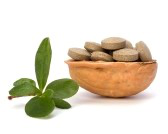
a) Heart And Gall-Bladder Deficiency
Clinical manifestations
Palpitations, anxiety, timidity, easily frightened, lack of self-assertion, easily discouraged, cannot sit or lie down, insomnia, waking up early in the morning.
Tongue: Pale.
Pulse: Weak.
Mental-emotional profile
This person is timid, shy and lacking in drive. He or she is easily discouraged and finds it difficult to make decisions. The anxiety is mild.
Treatment principle
Tonify the Heart and Gall-Bladder, calm the Mind.
i. Acupuncture
Points
HE-7 Shenmen, HE-5 Tongli, BL-15 Xinshu, Ren-14 Juque, G.B.-40 Qiuxu, ST-36 Zusanli.
Three Treasures remedy
Breaking Clouds
Breaking Clouds tonifies and lifts Qi and strengthens the Heart and Gall-Bladder.
b) Heart-Blood Deficiency
Clinical manifestations
Palpitations, anxiety, dizziness, pale face, insomnia, poor memory, tiredness.
Tongue: Pale and Thin.
Pulse: Choppy or Fine.
Mental-emotional profile
This person is most likely to be a woman, pale, depressed and anxious. The anxiety is mild and she hides it well.
Treatment principle
Nourish Heart-Blood, calm the Mind.
i. Acupuncture
Points
HE-7 Shenmen, Ren-14 Juque, ST-36 Zusanli, SP-6 Sanyinjiao.
ii. Herbal therapy
Prescription
GUI PI TANG
Tonifying the Spleen Decoction Variation
Three Treasures remedy
Calm the Shen
Calm the Shen is a variation of Gui Pi Tang and it nourishes Heart-Blood and calms the Mind.
c) Kidney- And Heart-Yin Deficiency With Empty Heat
Clinical manifestations
Palpitations, anxiety that is worse in the evening, mental restlessness, insomnia, night-sweating, feeling of heat in the evening, five-palm heat, dizziness, tinnitus.
Tongue: Red without coating
Pulse: Floating-Empty and Rapid.
Mental-emotional profile
This person is more likely to be middle-aged. The anxiety is marked and is experienced more in the evenings. In women, this type of anxiety is markedly aggravated with the onset of the menopause. There is a characteristic restlessness and fidgetiness.
Treatment principle
Nourish Heart- and Kidney-Yin, clear Empty Heat, calm the Mind.
i. Acupuncture
Points
HE-7 Shenmen, Ren-14 Juque, KI-3 Taixi, Ren-4 Guanyuan, SP-6 Sanyinjiao, HE-6 Yinxi, KI-7 Fuliu.
ii. Herbal therapy
Prescription
TIAN WANG BU XIN DAN
Heavenly Emperor Tonifying the Heart Pill
Three Treasures remedy
Heavenly Empress
Heavenly Empress nourishes Heart- and Kidney-Yin, clears Empty Heat and calms the Mind. Please note that although this remedy is part of the Women's Treasure range, it is equally suitable for men as it is a variation of Tian Wang Bu Xin Dan Heavenly Emperor Tonifying the Heart Pill.
d) Lung- And Heart-Qi Stagnation
Clinical manifestations
Palpitations, anxiety, a feeling of distension or oppression of the chest, depression, a slight feeling of a lump in the throat, slight shortness of breath, sighing, sadness, chest and upper epigastric distension, slightly purple lips, pale complexion.
Tongue: slightly Pale-Purple on the sides in the chest area.
Pulse: Empty but very slightly Overflowing on both Front positions.
Mental-emotional profile
This person is anxious but also worried and sad. They will tend to be pale and speak with a weak voice. The anxiety is experienced in the chest.
Treatment principle
Move Qi in the Heart and Lung, relax the chest, calm the Mind.
i. Acupuncture
Points
HE-5 Tongli, HE-7 Shenmen, P-6 Neiguan, Ren-15 Jiuwei, Ren-17 Shanzhong, LU-7 Lieque, ST-40 Fenglong.
ii. Herbal therapy
Prescription
BAN XIA HOU PO TANG
Pinelia-Magnolia Decocción.
Three Treasures remedy
Open the Heart
Open the Heart moves Qi of the Heart and Lungs and calms the Mind. It has a special action on the chest and it is therefore particularly indicated when there are chest symptoms such as a feeling of tightness or oppression of the chest.
e) Heart-Blood Statis
Clinical manifestations
Palpitations, anxiety, insomnia, agitation, poor memory, chest pain.
Tongue: Purple on the sides (chest area).
Pulse: Wiry, Choppy or Firm.
Mental-emotional profile
This person will tend to be middle-aged. The anxiety is experienced more in the evening and often also in the middle of the night, when they might wake up with a panicky feeling.
Treatment principle
Invigorate Heart-Blood, eliminate stasis, calm the Mind.
i. Acupuncture
Points
HE-5 Tongli, P-6 Neiguan, Ren-14 Juque, Ren-15 Jiuwei, LIV-3 Taichong, SP-6 Sanyinjiao.
f) Phlegm-Heat Harassing The Heart
Clinical manifestations
Palpitations, anxiety, insomnia, dreaming a lot, feeling of oppression of the chest, sputum in the throat, slightly Amanic@ behaviour.
Tongue: Red, Swollen with sticky-yellow coating.
Pulse: Slippery-Rapid.
Mental-emotional profile
In this case, the anxiety is marked, to the point of agitation. The person may be hyperactive and slightly chaotic.
Treatment principle
Resolve Phlegm, clear Heart-Heat, calm the Mind, open the Mind's orifices.
i. Acupuncture
Points
P-5 Jianshi, HE-8 Shaofu, Ren-12 Zhongwan, ST-40 Fenglong, ST-8 Touwei, G.B.-13 Benshen, Ren-15 Jiuwei, Du-24 Shenting.
ii. Herbal therapy
Prescription
WEN DAN TANG
Warming the Gall-Bladder Decoction
Three Treasures remedy
Clear the Sould
Clear the Soul clears Heat and resolves Phlegm from the Heart and Lungs and calms the Mind.
Settling the Soul
Settling the Soul clears Heat and resolves Phlegm from the Heart and Liver, calms the Mind and settles the Ethereal Soul.
By Giovanni Maciocia

